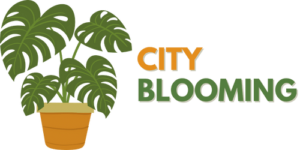Some Known Details About City Blooming
Some Known Details About City Blooming
Blog Article
The City Blooming Diaries
Table of ContentsAn Unbiased View of City Blooming6 Simple Techniques For City BloomingOur City Blooming PDFsMore About City BloomingCity Blooming Fundamentals Explained
Interested in expanding food available in the City of Chicago? Assuming about starting a neighborhood yard? Modifications to the Chicago Zoning Ordinance permit farming uses like area yards and city farms in many parts of the city. Below is a listing of regularly asked concerns regarding the regulations and policies that cultivators should take into consideration when planning a metropolitan farming project.
The zoning amendment does not change any type of other codes taking care of composting, building licenses, acquiring or renting City owned property, service licenses or environmental contamination. There are existing codes that manage these problems and they continue to be completely impact and might be applicable to your job. Neighborhood yards are generally owned or handled by public entities, public companies or community-based companies and maintained by volunteers.
Urban farms grow food that is meant to be marketed, either on a nonprofit or for-profit basis. Because of their commercial purpose, metropolitan ranches require a company license. Yes. A neighborhood yard is enabled to market surplus generate that was grown on site if the sales are accessory or subservient to the yard's key function explained over.
Some Of City Blooming
Composting is enabled yet only for plant material that is generated and utilized on website. The quantity of garden compost product can not exceed 25 cubic lawns at any type of given time according to the requirements in 7-28-715 of the City's Municipal Code. Yes. Since the dirt at most brand-new garden sites needs changing, compost, dirt, timber chips, or other products can be obtained to build or enhance the expanding space - eco-friendly practices.

If a structure license is needed then the hoophouse will certainly be considered an accessory structure. You can figure out even more about the structure authorization requirements by contacting the Division of Buildings. The 25,000-square-foot size limit is meant to protect against a solitary neighborhood garden from controling an offered block or interfering with the block's existing property or business personality.
The restriction does not relate to yards located in Public Open Area (POS) districts. Can there be greater than one area garden that is 25,000 square feet on a single block? Yes. The dimension restriction relates to individual yards, not to specific blocks. No. Secure fencing is not needed, however, gardens that have huge car park locations may be needed to install fence or other landscaping features.
Getting My City Blooming To Work
B1 & B2 districts need that all commercial use activities be carried out indoors. Is fence needed for urban farms? Fencings may be required, along with landscaping and screening, for particular vehicle parking locations and outside work or storage locations depending on place and the specific task taking place.
Yes. Urban ranches require structure permits and zoning authorizations before building and construction. Various other kinds of city review may be required relying on particular structures, tasks, size, landscape design, licensing, public health and stormwater management problems. Many of these demands are recognized in the task layout or allowing procedure, nevertheless, the candidate might be accountable to independently identify particular licenses or allows that might be needed.
Yes. The kind of permit is figured out by what is occurring at the site. The Division of Company Matters and Customer Defense can assist determine the particular kind of company license that's required. Yes. Off road car parking is needed for most commercial tasks in Chicago. The required variety of garage is based upon the number of workers working with website and not the square video of the growing room.
More About City Blooming

A metropolitan farm can sell compost product produced on website, however, the procedure should abide with the laws in 7-28-715 of the Chicago check it out Municipal Code. Aquaponic systems are permitted inside your home on urban ranches in several zoning areas.
Approximately five hives or nests of honey might be maintained as an accessory usage. However, beekeepers have to sign up with the Illinois Department of Farming. To find out more regarding the proposed zoning modification you may get in touch with the Division of Real Estate and Economic Development, Bureau of Planning and Zoning at 312.744.8563.
Farming in cities and city locations An urban ranch in Chicago. Urban agriculture refers to various methods of growing. https://www.twitch.tv/cityblooming/about, processing, and dispersing food in metropolitan areas. The term additionally relates to the location tasks of pet husbandry, aquaculture, beekeeping, and cultivation in an urban context. Urban farming is differentiated from peri-urban farming, which happens in backwoods beside suburban areas.
Getting My City Blooming To Work
, that seek to create social networks started on a common values of nature and area holism. These networks can develop by method of official institutional assistance, becoming integrated into neighborhood town planning as a "shift community" motion for sustainable metropolitan advancement.
In either situation, the more direct access to fresh vegetable, fruit, and meat products that may be become aware with urban agriculture can enhance food security and food safety and security while reducing food miles, causing reduced greenhouse gas emissions, therefore adding to climate adjustment mitigation. Several of the very first evidence of metropolitan agriculture originates from Mesopotamia.
Report this page